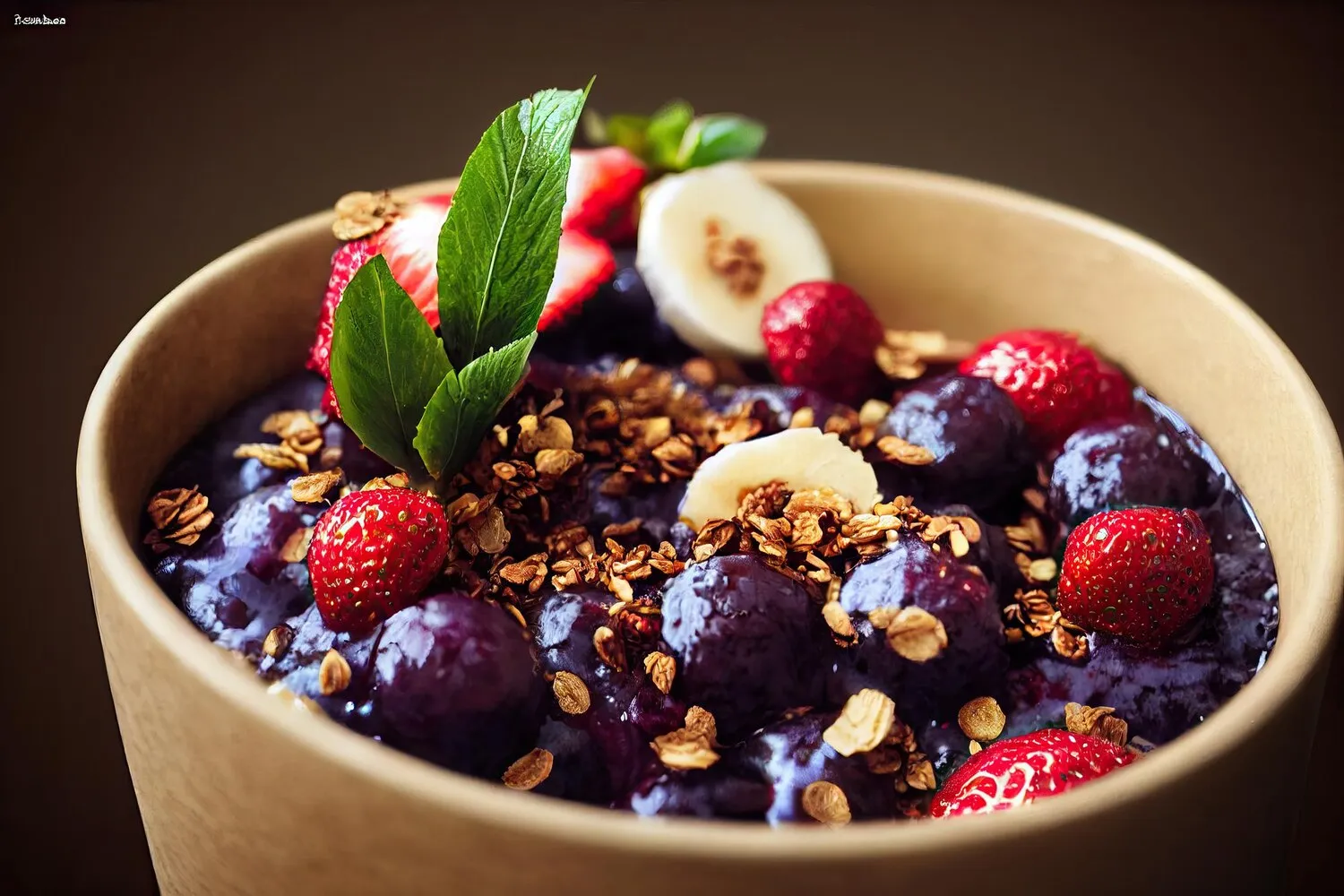
Açaí
Açaí bowls with various toppings.
Nutrition Facts
* The % Daily Value (DV) tells you how much a nutrient in a serving of food contributes to a daily diet. 2,000 calories a day is used for general nutrition advice.
Nando's Gourmet
Açaí has been a staple food in the Amazon region for centuries, consumed by indigenous populations as a source of energy and nutrients. Its modern popularity outside of the Amazon began to rise in the late 20th century, initially among surfers and athletes, and has since exploded globally due to its purported health benefits and appealing flavor.
Açaí has become deeply embedded in Brazilian culture, particularly in coastal areas. It's often associated with a healthy and active lifestyle, and is a popular post-workout snack or refreshing treat.
Amazonian Staple
Historically, açaí was a crucial part of the diet for indigenous Amazonian communities, providing essential nutrients and energy for their physically demanding lifestyles.
Coastal Culture
In cities like Rio de Janeiro and São Paulo, açaí bowls are widely available at beach kiosks, juice bars, and cafes, reflecting the region's emphasis on outdoor activities and healthy eating.
Symbol of Health and Wellness
Açaí is often marketed as a superfood and associated with health benefits like antioxidant properties and energy boosting qualities, contributing to its popularity among health-conscious individuals.
Açaí bowls offer a complex flavor profile blending earthy, slightly bitter notes with sweetness from added fruits and toppings. The texture is creamy and icy, similar to a smoothie or frozen yogurt.
The primary flavor comes from the açaí berry itself, which isn't overly sweet and possesses an earthy, slightly chocolatey or berry-like undertone. To balance this, the açaí pulp is typically blended with fruits like banana, berries (strawberries, blueberries), or mango for sweetness and enhanced fruitiness. Honey or agave nectar may also be added for extra sweetness. Toppings introduce a variety of flavors and textures, including crunchy granola, creamy nut butter, tropical fruits like coconut or pineapple, and sweet elements like chocolate chips or goji berries.
Açaí Pulp Quality
Look for high-quality açaí pulp with a deep purple color and a slightly bitter flavor. Avoid pulp that is overly sweet or has a pale color, as it may be diluted or of lower quality.
Balancing Flavors
Experiment with different fruit combinations to complement the açaí flavor. Berries, bananas, and tropical fruits work well. Consider adding a touch of acidity, like lemon or lime juice, to brighten the flavor.
Topping Variety
Mix and match toppings to create a variety of textures and flavors. Include crunchy elements like granola or nuts, creamy elements like nut butter or coconut flakes, and fresh fruits for sweetness and hydration.
Controlling Sweetness
Be mindful of the sugar content from added fruits, honey, and toppings. Opt for natural sweeteners like dates or maple syrup if desired, and choose low-sugar granola options.
Explore additional Açaí dishes and restaurants
Explore AçaíDiscover top dining spots and culinary experiences in Governador Valadares.
Explore Governador ValadaresLearn more about the food culture, restaurant scene, and culinary heritage of Brazil.
Explore Brazil